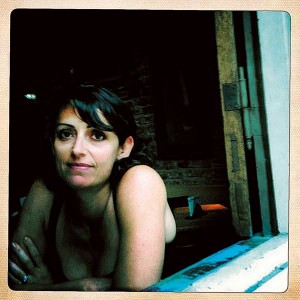BEN SOLLEE

Profession: Cellist and songwriter
Hometown: Lexington, Ky.
Current Home: Louisville, Ky.
Known for: Sollee wrote music for At the Vanishing Point, Naomi Iizuka’s play about Louisville’s Butchertown neighborhood, and music-directed That High Lonesome Sound, both at Actors Theatre of Louisville. He’s also an environmental activist and has two albums, Dear Companion and Learning to Bend.
What’s next: He’s working on Livestream, an NEA-granted eco-art and tech installation created with the Public Works Collaborative, that will be installed in nearby Lexington; a new record, Steeples; and an interactive multimedia version of Harold and the Purple Crayon for Stage One Family Theatre in Louisville next spring.
What makes him special: Actors Theatre artistic director Les Waters, who directed Vanishing Point, calls Sollee a “virtuoso with humility and a big heart,” and fellow musician/actor Rebecca Hart, also a Vanishing Point cohort, raves, “There is a sort of halo of positivity/optimism around him that puts people at ease and makes him super-watchable/listenable live. A kind of relaxed seeming effortlessness, too. Even when he’s dark he’s not tortured, and neither are you, the listener.”
Why he chose the cello: “My grandfather, Elvis Henry Cornelius, was always on me about getting really good at just one thing, but at one point I asked him, ‘What if you get good at a lot of things?’” Sollee says. “That’s a huge part of why I chose the cello as my musical soulmate. I can go out in the world and have lots of experiences. It’s the Swiss army knife of the orchestra, capable of gorgeous harmony and a huge melodic range. It’s a big toolbox.”
FRANCESCA McKENZIE

Profession: Actor
Hometown: San Francisco
Current Home: New Orleans
Known for: She’s a jack-of-all-trades (performer, grant writer, social media) and company member at New Orleans–based ensembles Cripple Creek Theatre Company and Goat in the Road Productions.
What’s next: She’s currently in her first year in the Yale School of Drama MFA acting program—and she brings a lot of experience with her. “I am excited to be challenged as an actor and have this time to focus solely on my craft,” she says. “If I had gone to grad school right out of undergrad I wouldn’t have known why. Since I’ve been making work in New Orleans I’m going into the experience with a clear sense of what kind of theatre I want to make.” She’s understudying a role in peerless at Yale Repertory Theatre this month and will be in Salt Pepper Ketchup at the Yale Cabaret in January 2016.
What makes her special: “She is vibrant onstage and off,” says Kathy Randels, artistic director of ArtSpot Productions. “We first spoke when she was directing Clybourne Park and challenging her own company and our city to talk more deeply about gentrification and racism in New Orleans.”
Her artistic values: “As an activist and organizer, I value deep relationships and using art as a tool for community building,” she explains. “I envision a national theatre landscape where all stories can take center. I want people of all skin colors, class brackets, and experiences in the audience, onstage, and on the production team. I remember every time I saw an actor of color onstage as a child, and how truly groundbreaking it was for me. I want to make theatre for the little 10-year-old me’s out there and let them know they can tell their stories, too.”
HANSOL JUNG

Profession: Playwright
Hometown: Seoul, Korea
Current Home: Brooklyn
Known for: She was the most listed writer on this year’s Kilroys list, with plays including Cardboard Piano, about a young romance doomed by Ugandan civil war, and Wolf Play, about a Korean adoptee shuffled among various families.
What makes her special: Her teachers at Yale included playwright Sarah Ruhl, who called Jung’s work “lyrical, brave, funny, skirting the jagged edges of how people live in the contemporary world,” and dramaturg Jeanie O’Hare, who praised Jung as “a champion rewriter…She is always able to see the potential within her own fledgling ideas and drive through to find their optimum power and shape. She is a very balanced and joyful writer, technically free and emotionally voracious…She is also a collaborator and writes speakable dialogue; neither of these two very simple requirements should ever be underestimated.”
What’s next: Her play No More Sad Things will get a co-world premiere at Sideshow Theatre in Chicago (Nov. 15–Dec. 20) and at Idaho’s Boise Contemporary Theatre (Nov. 24–Dec. 19). “They’re two different productions, basically at the same time,” Jung marvels. “It’s going to be crazy.”
Themes she seems to return to: “Displacement, isolation, uprootedness—trying to heal from trauma or the loss that has displaced you,” she answers. “Also, there are always children in my plays, which is weird, because they’re not in my life. I wrote a really, really sad play in my first year at Yale about pedophilia. So I said, ‘I don’t care what the next play is—it’s going to be set in Maui and called No More Sad Things.’” The play isn’t all sweetness and light, though, because, as Jung learned, “Happy plays are really hard to write.”
JAMIL JUDE

Profession: Director/producer
Hometown: Born on Saint Thomas in the U.S. Virgin Islands; raised in Tallahassee, Fla.
Current Home: Minneapolis
Known for: Jude most recently was the National New Play Network producer-in-residence at Mixed Blood Theatre, and directed The Piano Lesson at Maryland’s Olney Theatre Center last year. He’s also the founder of the New Griots Festival, an annual celebration of black arts.
What’s next: In December he’ll start a TCG-sponsored mentorship at Park Square Theatre in St. Paul, but he’s already at work there assisting director James A. Williams on My Children, My Africa!
What makes him special: Anya Kremenetsky, an artistic associate at St. Paul’s History Theatre, says she was impressed by Jude’s direction of a reading of Josh Wilder’s The Highwayman. “Jamil is remarkably skilled in creating socially relevant theatre, and engaging the community by connecting with people who are affected by the issues explored in the play.”
How he caught the theatre bug: A football player at Colgate University in upstate New York, Jude was red-shirted his freshman year. During his downtime he met another former gridiron player who was working on a play at a local stage called Urban Theatre. The play, titled Ransom, dealt with racial tensions in the South, and it struck Jude that “you could be young and write about something relevant.” Theatre has since been “life-changing for me, to get the affirmation as a person of color,” though he says he most cherishes “stories about the intricacies of being a person, not just a person of color. In my own journey toward self-actualization, I’d be lying if I said the theatre wasn’t a part of that.” He’s especially gratified that his path has led him to the Twin Cities, where several theatres are experiencing game-changing leadership turnovers. “I’m excited to see what direction this goes in,” Jude says. “That’s part of what’s driving and keeping me here—to figure out what part I have to say and play in all this.”
NEEL McNEILL

Profession: Arts administrator
Hometown: Born in Charlotte, N.C., and raised in Cincinnati
Current Home: Chicago
Know for: She’s the managing director of Definition Theatre and the marketing manager at Steppenwolf Theatre.
What’s next: While Steppenwolf is in the midst of East of Eden (closing Nov. 15) and preparing its December run of Bruce Norris’s Domesticated, McNeill is gearing up for Definition’s coproduction with New Colony of Evan Linder’s Byhalia, Mississippi at the Den Theatre, opening in January 2016.
What makes her special: Writers Theatre artistic director Michael Halberstam helmed Definition’s production of A Doll’s House last spring, and he was impressed by McNeill’s “successful symbiosis” with Definition artistic director Tyrone Phillips, saying that Phillips “knows he is lucky to have a manager of Neel’s determination and commitment along with her skill and foresight…and Neel knows she is lucky enough to be working with an artist who has…a sophisticated artistic vision.”
Why she works backstage: “I’m one of seven children, so I’m used to not getting the spotlight,” McNeill says. “I’m the second youngest—I almost had the glory, but then my little sister stole it!” She comes by her inclination for the behind-the-scenes work sincerely, though: McNeill says she not only noticed that she had a knack for stage-managing her school plays but that she genuinely “enjoyed being the person who created the opportunity to do the art.” At Definition, that includes opening doors for actors of color, including in revivals of Western classics. She says she doesn’t like the term “non-traditional casting. I think you cast good actors to artistically reflect modern America.”
NINA BALL

Profession: Set designer
Current Home: Oakland, Calif.
Known for: My Fair Lady at San Francisco Playhouse; Metamorphosis at Aurora Theatre Company.
What’s next: Her sets can be seen in Monstress at American Conservatory Theater Sept. 16–Nov. 22, and in California Shakespeare Theater’s The Tempest Nov. 13–22.
What makes her special: Patrick Dooley, artistic director of Shotgun Players, recalls that Ball “came to us straight out of grad school in 2008 with a hip, shape-shifting set for Macbeth. Since then she has designed a whopping 24 sets, every one of them unique. Many of our audiences anticipate the moment they enter the theatre for a Nina Ball show to see not only what she has done with the set, but how she has transformed the entire space. Her attention to detail is unparalleled—even with her squirming daughter on her lap.”
How she got into theatre: “My pathway to theatre has been circuitous—starting in the sciences and then to the fine arts, and now into film,” Ball says. “I have always loved the challenge of trying new things, of learning, and theatre provides an ever-changing set of problems to be solved. In designing, I aim to distill themes into visual landscapes where space becomes revelatory, creating the emotional setting for characters to inhabit. I am inspired by sculpture and form, and usually begin by searching for elements that capture the mood of the play and what is necessary to convey these emotions visually.”


